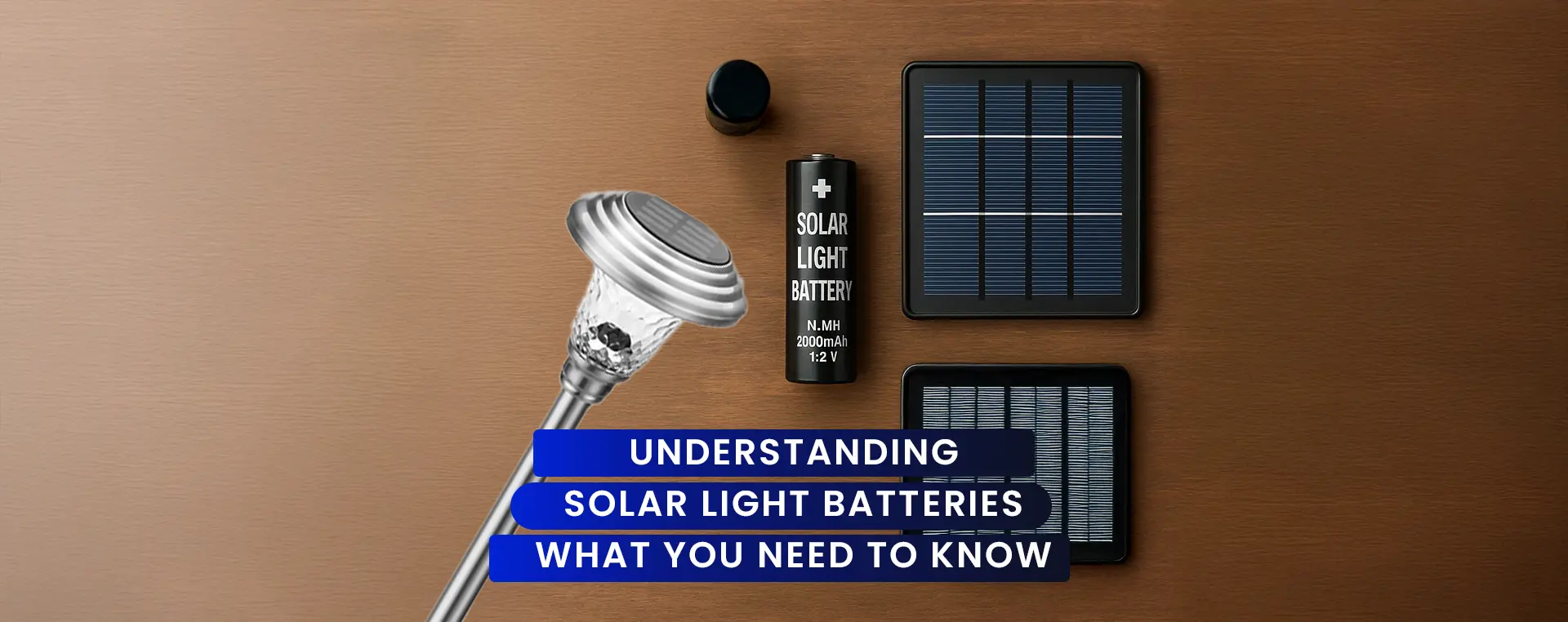While solar lighting continues to gain popularity in residential and commercial applications, knowing how batteries fit into solar lights is important. Lighting your garden walkway, securing your outdoor space, or installing decorative interest in your landscape—batteries lie at the core of a solar light system. In this blog post, we will explore what solar light batteries are, how they function, and what you must know in order to effectively replace or maintain them.
What Are Solar Light Batteries?
Solar light batteries are rechargeable batteries which hold energy that is harvested from the sun using a solar panel. When sunlight strikes the solar panel during the daytime, it is converted to electrical energy and charged to the battery. The stored energy in the battery is then utilized to illuminate the LED light during the nighttime. A majority of solar lights have integrated batteries, and the battery type and capacity indicate how long and intense the light will be.
Types of Batteries Employed in Solar Lights
There are mainly three types of rechargeable batteries employed in solar lights:
Nickel Metal Hydride (NiMH): These are more environmentally friendly and possess a greater capacity than older NiCd batteries. They are also less prone to memory effect, so they are an excellent option for solar lighting.
Nickel Cadmium (NiCd): These used to be the norm in previous solar lights but are gradually being discontinued because of their impact on the environment and memory effect which has a detrimental impact on the battery's performance after a period.
Lithium-ion (Li-ion) or Lithium Iron Phosphate (LiFePO4): These batteries find most common usage in higher-grade solar lights. They have high energy density, greater lifespan, and quicker charging.
How Long Do Solar Light Batteries Last
The battery life of a solar light depends on the quality of the battery, type of battery, and usage of the light. Generally:
NiMH/NiCd batteries: 1–2 years
Lithium-ion batteries: 2–5 years
Maintenance by keeping the solar panel clean and exposed to plenty of sunlight will increase battery life.
Signs That Your Solar Light Battery Needs Replacing
If your solar lights are not as bright or for as long a time as they once were, it may be time to replace the batteries. Some common indications of dead or weak batteries are:
The light goes off immediately after dusk
The light is significantly less bright
The light will not come on at all
Most solar lights have batteries that you can easily replace with a screwdriver and a new compatible battery.
Tips for Solar Light Battery Maintenance
Clean the Solar Panel Periodically: Dust or dirt may block sunlight, minimizing charging efficiency.
Stay Away from Shaded Areas: Mount lights where they will get full sun for a minimum of 6–8 hours per day.
Turn Off Periodically: In case your region has multiple cloudy days, turning off the lights can provide batteries with an opportunity to charge to their capacity.
Replace in Pairs: If your light uses multiple batteries, replace them all together to maintain consistent performance.
Conclusion
Knowing how solar light batteries function and how to maintain them guarantees that your solar lighting system is running efficiently and dependably. Selecting the proper battery type, keeping the solar panel in good condition, and knowing when to change your batteries will make your solar lighting experience worthwhile for years to come. With a little maintenance, you can keep your lights burning bright and your outdoor areas perfectly lit—fully powered by the sun.


